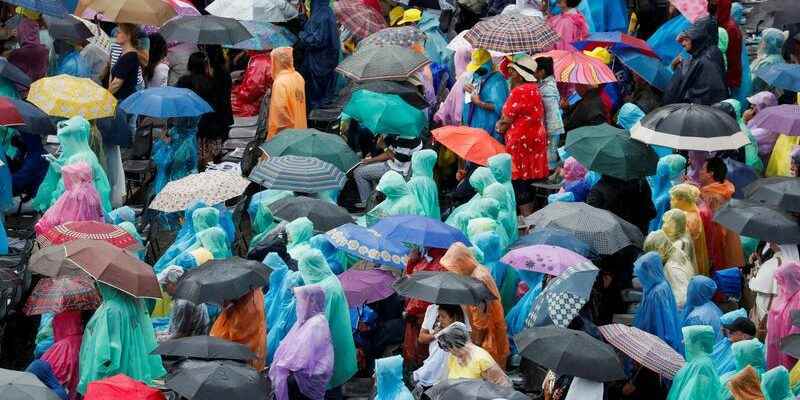Pope Francis built his predecessor in a ceremony in St. Peter’s Square in front of tens of thousands of people. Beatification is the last step before sainthood in the Roman Catholic Church.
Jean Paul was known as “the smiling pope” because of his gentleness and simplicity.
“With a smile, Pope John Paul managed to communicate the goodness of the Lord,” Francois said in his homily, as people huddled under umbrellas in a thunderstorm.
“How beautiful is a church with a happy face, serene and smiling, which never closes doors, never hardens hearts, never complains and harbors resentment, never gets angry and does not ‘don’t be impatient, don’t look sullen and don’t suffer from nostalgia for the past’.
Born Albino Luciani in poverty in a mountain village in northern Italy in 1912, he was ordained a priest in 1935, a bishop in 1958 and a cardinal in 1973.
He was elected pope on August 26, 1978 after the death of Pope Paul VI, taking the name John Paul to honor his two immediate predecessors.
Two nuns from the papal household who heard no response to a knock on his door at 5:20 a.m. on September 29 to bring coffee found him dead in his bed. Doctors said he died of a heart attack and aides said he had complained of chest pains the day before but had not taken them seriously.
CONFLICTING VERSIONS
At first, the Vatican, uneasy that two women entered the pope’s bedroom, said he was found dead by a priest.
The Vatican corrected itself but the misstep sparked conspiracy theories.
In 1984, “In God’s Name – An Investigation into the Murder of Pope John Paul I”, by British author David Yallop, which claimed the pope had been poisoned by a cabal linked to a secret Masonic lodge, spent 15 weeks on the New York Times bestseller list.
The New York Times’ own review of the book, however, ridiculed Yallop’s investigative techniques. In 1987, another Brit, John Cornwell, wrote a book called “A Thief in the Night”, meticulously dismantling conspiracy theories.
Although largely debunked, the idea of a 20th century pope murdered in his bedroom has irresistibly penetrated the collective consciousness and in the film “The Godfather Part III”, a pope named John Paul I is killed with poisoned tea.
“There is absolutely no truth to it,” Vatican Secretary of State Cardinal Pietro Parolin said when asked about the conspiracy theories on Italian television on Friday.
“It’s a shame that this story, this dark novel, continues. It was a natural death. There is no mystery about it,” said Mr. Parolin.
Italian journalist and author Stefania Falasca, who spent 10 years documenting Jean-Paul’s life and consulting his medical records, has written several books about him. She called conspiracy theories “publicity rubbish”.
Falasca, who was the assistant postulator, or promoter, of the cause of holiness, said he was built not on what he did as pope but on how he lived his life. .
Jean-Paul is credited with the miraculous recovery of an 11-year-old Argentinian girl who suffered from severe brain inflammation, epilepsy and septic shock. His parents took him.
The Roman Catholic Church teaches that only God performs miracles, but that the saints, who are supposed to be with God in heaven, intercede for those who pray to them.
A second miracle will have to be verified for John Paul to be declared a saint.
